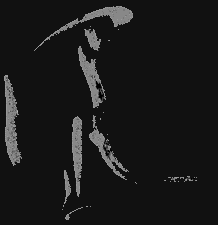木 村 尚 樹
fine photographic arts
零線上の限界芸術
*限界芸術の延長線上(昇華概念)に零式がある。零線上限界芸術=零式。
新たな“見立て”としての価値。
限界芸術へ“昇華”する以前の派生要素として根源的≒本能を言う「零(限界上の)」はその意味では限界芸術の根源要素であって、その“際“にゆらぎながら存在する概念である。
従って、限界芸術として成り立つであろう、インスタグラム等の人間の営みに付随する芸術への進化の途中で、分岐していくベクトルの一本が、零式写真美術と言ってもよいのかもしれない。その先に現代美術の概念主体の表現や商業空間も想定外ではないであろう。
しかし、これまでの写真作品に対する評価概念の曖昧さは、それ自体を「写真」独特の評価システムとして、現代美術的な理路整然とした解釈を持たせていない写真表現作品(ドキュメンタリー等、記録意図の表現を除く)を、”なんとなく”評価してきたことで、体型をつくれていないこととのパラドックスになりえるのである。
実はこの体感的な”ゆらぎ”をただ「綺麗なもの」、として無視してきたことによる「見立て」の怠慢があることも露呈することになる。
「“伝えたいこと“ をステートメントとして説明すること」に初期から現在までの美術の文脈へのアプローチを委ねる、現代美術と一線を画する”写真“の分野であるが、
近年では、写真を使用した“現代美術作品”を主体に評価価値・対象を変更しつつあるのが現状である。
その中で、写真をリアリズムと捉える評価眼等の伝統的な写真評価がピクトリアリズムを否定する時代を彷彿とさせるように、写真美術を本流には導入しない(できない)現状がある。
この「零式」はそのような死に体と化した、「写真」を美術として扱う設えを新たな概念として提唱するものである。
更に言うならば、この母体ともいえる限界芸術論は日本人哲学者により戦後に定義されたものであって、日本独自のまた、日本発の概念として声高に訴えることが適う要素を備えていることも特筆すべき点である。
欧米の美術システムが主流であることは自明であり、疑う余地はない。
美術を商品として扱うに於いて、その文脈に適わぬものが評価・取り扱いの誉を受けることも皆無である。
ただ、芸術なり美術を単に商品としてのみに規定する作家だけではないことも事実であり、その者たちの多くは“美”を提唱したい欲求があることもまた事実である。
それを行うこと、「芸術は、美を生むことだ・・」という発想なり提唱は、「青臭い」と称されよう美術界と言う通俗社会が存在する。
青臭い・・から、芸術家なのであろう?
零式だが、写真美術というものがここにある。
写真を”美しい“と言える日本は如何だろうか。
©Naoki Kimura
